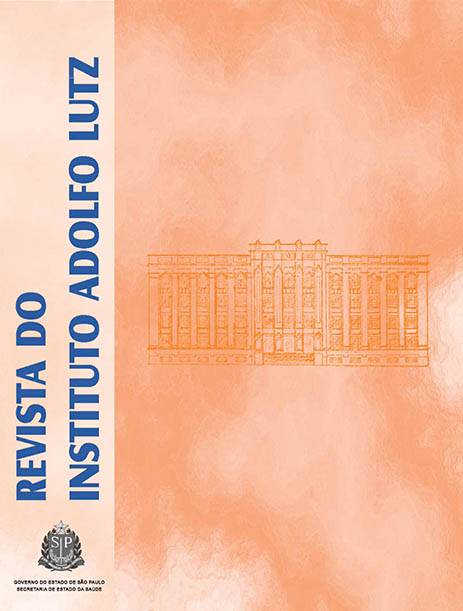Abstract
Mineral water consumption has been associated with a healthy lifestyle, and many consumers believe that this is a relatively safe product. In Brazil, the RDC no. 275/05 regulates the microbiological standards for mineral and natural waters. This study aimed at comparing the membrane filtration and the most probable number (MPN) techniques for analyzing the microbiological quality of natural mineral water samples bottled into 20-liter containers, commercialized in Rio de Janeiro, Brazil. Of 31 representative samples (a total of 155 units), 22 (70.97%) were unsatisfactory. Among these noncompliant samples, fecal coliforms were detected in two (6.45%). Total coliforms count above the established limit was observed in three samples (9.68%), being enterococci in one sample (3.23%); P. aeruginosa in 21 (67.74%) and sulfite-reducing clostridia in two (6.46%). The MPN technique showed highest sensitivity for detecting the microorganisms groups specified in the above mentioned regulation. Thus, the MPN technique proved to be mostly efficient and suitable for monitoring the microbiological quality of potable waters.References
1. Brasil. Ministério da Saúde. Resolução RDC n. 173, de 13 de setembro de 2006. Dispõe sobre o Regulamento Técnico de Boas Práticas para Industrialização e Comercialização de Água Mineral Natural e Água Mineral. Diário Oficial [da] República Federativa do Brasil, Brasília, DF, v. 178, 15 set 2006, Seção 1, p. 60.
2. Hiluy DJ, Perdigao GO, Aragao MAP, Peixoto TJ. Avaliação da qualidade microbiológica de águas minerais comercializadas em Fortaleza. Hig Aliment. 1994;8(33):17.
3. Kim H, Feng P. Bottled water. In: Downes FP, Ito K, organizadores. Compendium of Methods for the Examination of Foods. 4. ed. Washington: APHA; 2001. p. 573-6.
4. Jeena MI, Deepa P, Mujeeb Rahiman KM, Shanthi RT, Hatha AAM. Risk assessment of heterotrophic bacteria from bottled drinking water sold in Indian markets. Int J Hyg Environ Health. 2006;(209):191-6.
5. Ritter AC, Tondo EC. Avaliação microbiológica de água mineral natural e de tampas plásticas utilizadas em uma indústria da Grande Porto Alegre/RS. Alim Nutr, Araraquara. 2009;20(2):203-8.
6. Coelho DA, Silva PMF, Veiga SMOM, Fiorini J. E. Avaliação da qualidade microbiológica de águas minerais comercializadas em supermercados da cidade de Alfenas, MG. Hig Aliment. 2007;21(151):88-92.
7. Cardoso CC, Veiga SMOM, Nascimento LC, Fiorini JE, Amaral LA. Avaliação microbiológica de um processo de sanificação de galões de água com a utilização do ozônio. Cienc Tecnol Aliment. 2003;23(1):59-61.
8. Brasil. Ministério de Minas e Energia. Departamento Nacional de Produção Mineral. Fonseca DS. Água mineral. In: Rodrigues AFS, coordenador. Economia mineral no Brasil. Brasília: DNPM; 2009. p. 719-30. Disponível em: [http://www.dnpm.gov.br/conteudo.asp?IDSecao=68&IDPagina=1461].
9. Ministério da Saúde. Secretaria de Vigilância em Saúde. Coordenação de Vigilância das Doenças de Transmissão Hídrica e Alimentar. Surtos de DTA ocasionados por água. [acesso 2010 out 16]. Disponível em: [http://portal.saude.gov.br/portal/arquivos/pdf/surtos_agua_10.pdf ].
10. Brasil. Ministério da Saúde. Resolução RDC n. 275, de 22 de setembro de 2005. Regulamento Técnico de Características Microbiológicas para Água Mineral Natural e Água Natural. Diário Oficial [da] República Federativa do Brasil. Brasília, DF, v. 184, 23 set 2005, Seção 1, p. 377.
11. Eaton AD, Clesceri LS, Rice EW, Greenberg AE, organizadores. Standard Methods For the Examination of Water and Wastewater, 21.ed. Washington: APHA; 2005.
12. International Organization for Standardization – ISO. Norma ISO 6461 – Water Quality – Detection and enumeration of the spores of sulfite-reducing anaerobes (clostridia): Part 1 – Method by enrichment in a liquid medium; Part 2 – Method by membrane filtration, 1. ed. 1986.
13. Greenhalgh, T. How to Read a Paper – Papers That Report Diagnostic or Screening Tests. BMJ. 1997;315(7107):540-3.
14. Silva MEZ, Santana RG, Guilhermetti M, Camargo Filho I, Endo EH, Ueda-Nakamura T, et al. Comparison of the bacteriological quality of tap water and bottled mineral water. Int J Hyg Environ Health. 2008;(211):504-9.
15. Farache Filho A, Dias MFF. Qualidade microbiológica de águas minerais em galões de 20 litros. Alim Nutr, Araraquara. 2008;19(3):243-8.
16. Coelho MIS, Mendes ES, Cruz MCS, Bezerra SS, Silva RPP. E. Avaliação da qualidade microbiológica de águas minerais consumidas na região metropolitana de Recife, estado de Pernambuco. Acta Sci, Health Sci. 2010;32(1):1-8.
17. Lincopan N, Trabulsi LR. Pseudomonas aeruginosa. In: Trabulsi LR, Alterthum F, editores. Microbiologia. São Paulo: Atheneu; 2005. p. 359-68.
18. Brasil. Ministério de Minas e Energia. Departamento Nacional de Produção Mineral. Portaria n. 358, de 21 de setembro de 2009. Altera a Portaria n. 387, de 19 de setembro de 2008. Diário Oficial [da] República Federativa do Brasil. Brasília, DF, v. 181, 22 set 2009, Seção 1, p. 51.
19. Jay MJ. Métodos de Cultura, Microscopia e Amostragem. In: JAY MJ. Microbiologia de alimentos. Porto Alegre: Artmed; 2005. p. 199-221.

This work is licensed under a Creative Commons Attribution 4.0 International License.
Copyright (c) 2012 Instituto Adolfo Lutz Journal
